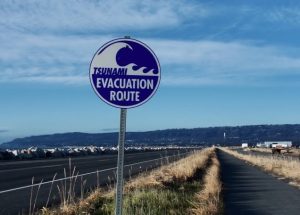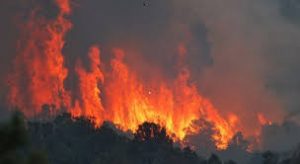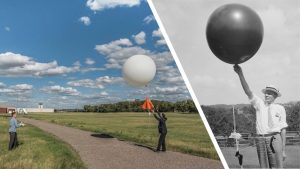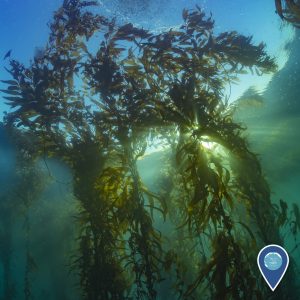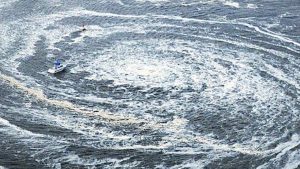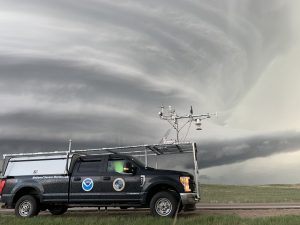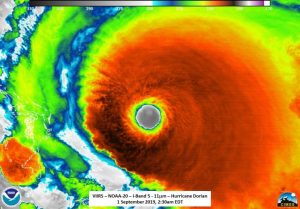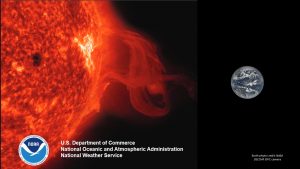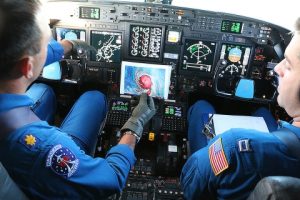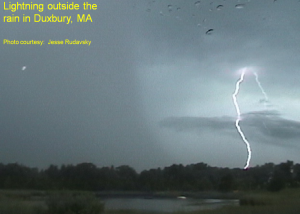Not Your Friendly Neighborhood Wave: Staying Safe from Tsunamis in Alaska
Dr. Summer Ohlendorf, NOAA’s National Weather Service Tsunami Warning Center in Palmer, AK Earthquakes, volcanoes, landslides, oh my! What’s one thing these hazards have in common? They’re all capable of moving a large amount of water very quickly, creating a special set of waves called a tsunami. While the most well known tsunami up here…
Read MoreFire Weather at an Incident
Kari Fleegel, NOAA’s National Weather Service in Aberdeen, SD Fire weather is a combination of conditions that set the stage for the rapid spread of wildfires. Join us to meet one of NOAA’s incident meteorologists who helps keep fire crews safe by enabling responders to plan operations around one of the most variable aspects of…
Read MoreUp, Up, and Away – Flying High with NWS Weather Balloons
Jeff Orrock, NOAA’s National Weather Service in Wakefield, VA NOAA launches weather balloons twice a day across the entire country. Weather balloons, also known as sounding balloons, are a special type of high-altitude balloon carrying instruments to near the edge of space. They send back information on atmospheric pressure, temperature, humidity, and wind speed by…
Read MoreCarbon’s Journey and Our Warming Planet
Frank Niepold and Tom Di Liberto, NOAA’s Climate Program Office in Silver Spring, MD The carbon cycle is a process where carbon dioxide travels from the atmosphere into living organisms and the Earth, then back into the atmosphere. Learn how changes in carbon dioxide levels, such as burning fossil fuels (oil, gas, etc.), affect the…
Read MoreMinutes Matter: Nature’s Warning Signs for Tsunami
Cindi Preller, NOAA’s National Weather Service Pacific Tsunami Warning Center in Honolulu, Hawai’i May 22, 2020, marks the 60th year since the 1960 Great Chilean earthquake, the largest ever measured at magnitude 9.5, which wreaked havoc across the entire Pacific Basin. Earthquakes and tsunamis have been happening globally since our planet was born. One of…
Read MoreTalking Tornadoes with a Storm Researcher
Sean Waugh, NOAA’s National Severe Storms Laboratory in Norman, OK Tornadoes occur all over the world and can be among some of the most damaging and destructive natural disasters. Our mission at the NOAA National Severe Storms Laboratory is to improve our understanding of tornadoes and all aspects of severe weather. This helps forecasters at…
Read MoreGetting Prepared for Hurricane Season
John Cangialosi, NOAA’s National Hurricane Center in Miami, FL Did you know that the Atlantic hurricane season runs from June 1 to November 30? Join us to learn everything you need to know about hurricanes: where and why hurricanes form, what NOAA does to make sure you have the most up to date information, how…
Read MoreSuper Storms From the Sun?! An intro to space weather
Shawn Dahl, NOAA’s National Weather Service at the Space Weather Prediction Center in Boulder, CO Did you know that giant storms from the Sun can reach all the way to Earth?! These solar storms may affect our way of life by possibly impacting technology and in extreme cases, even the health of astronauts or other…
Read MoreHunting Hurricanes with a NOAA Pilot
Commander Jason R. Mansour, NOAA, Aircraft Operations Center in Lakeland, FL NOAA Corps officers serve on the sea, on land, and in the air to support NOAA’s science and stewardship mission. While most pilots try to avoid flying an airplane into severe weather, NOAA Hurricane Hunters fly specially equipped aircraft into, above, and around the…
Read MoreWhen Thunder Roars, Go Indoors
Glenn Field, NOAA’s National Weather Service in Boston/Norton, MA Glenn, a warning coordination meteorologist, will discuss and share examples of different weather phenomena, including tornadoes, hurricanes, severe thunderstorms flash floods, and especially lightning. Lightning strikes the United States about 25 million times a year and is the #2 weather-related killer nationwide. Glenn will show you…
Read More
